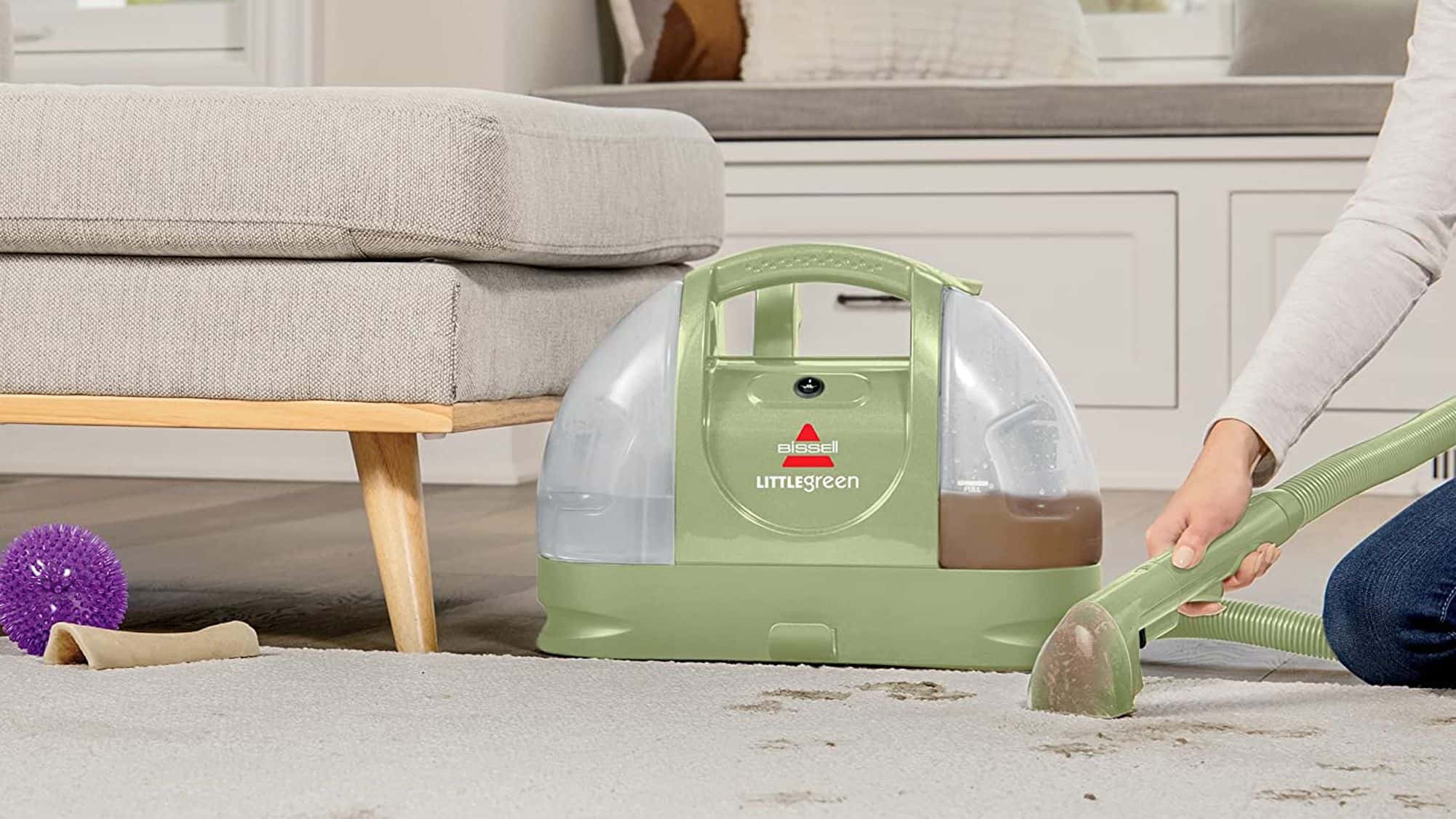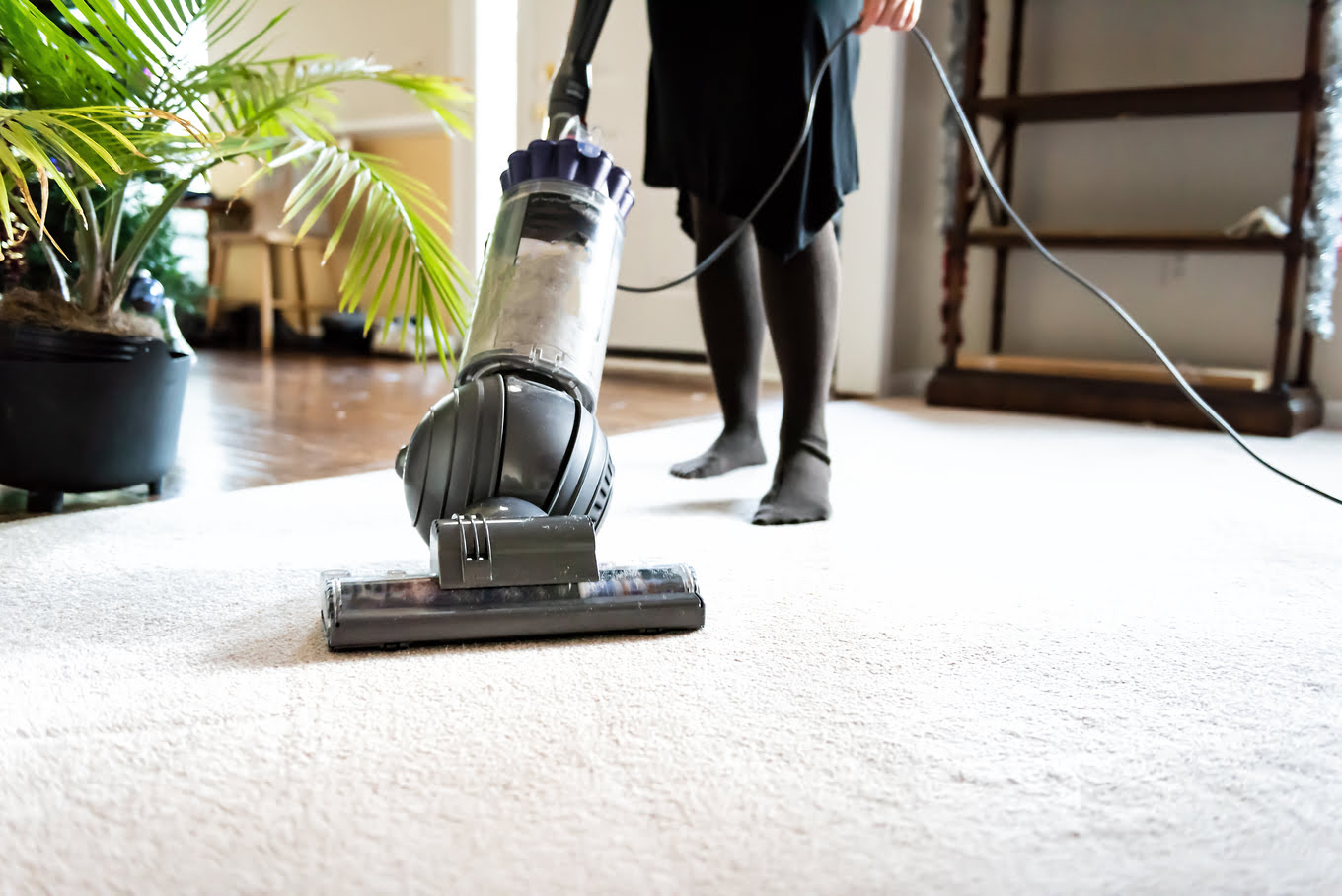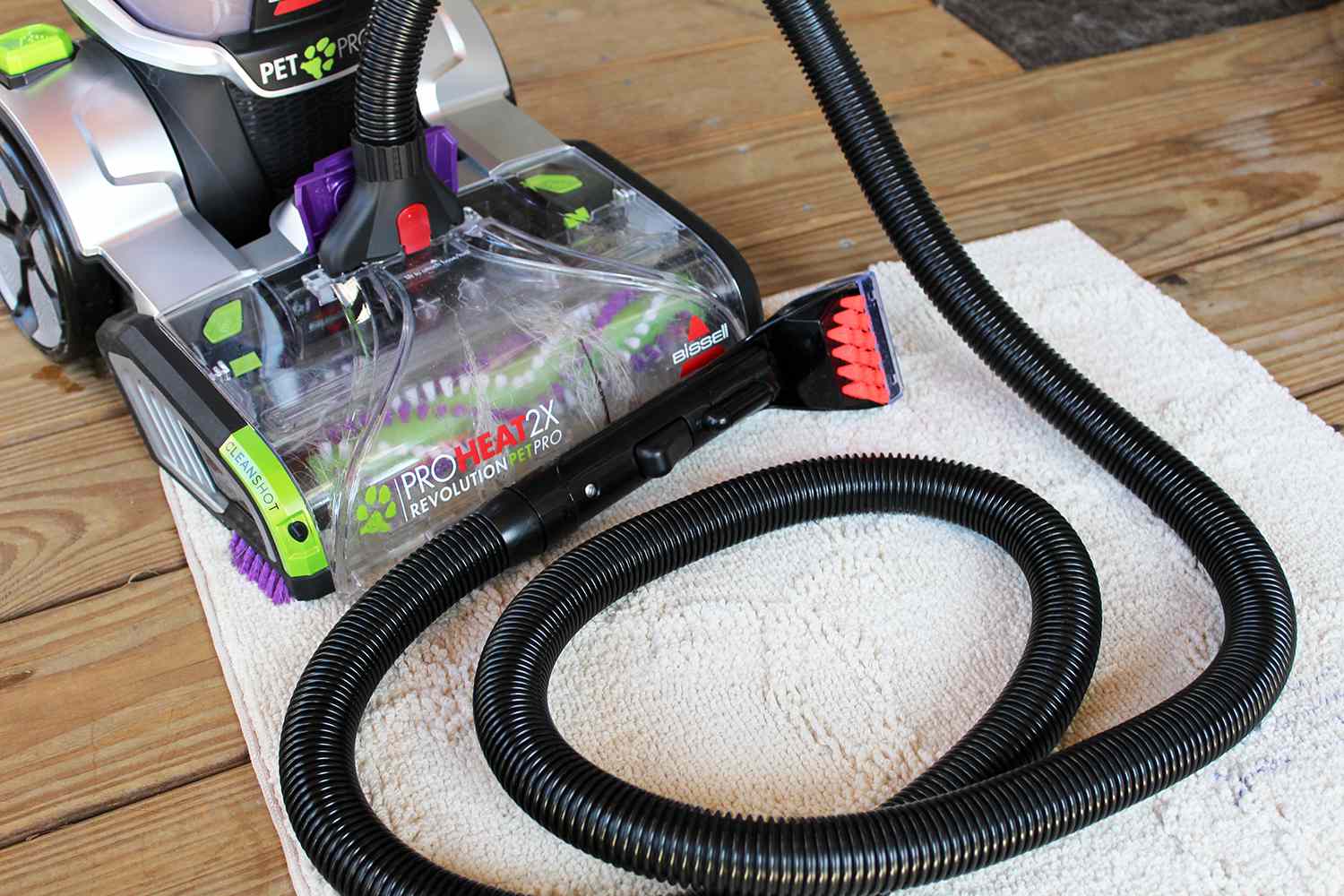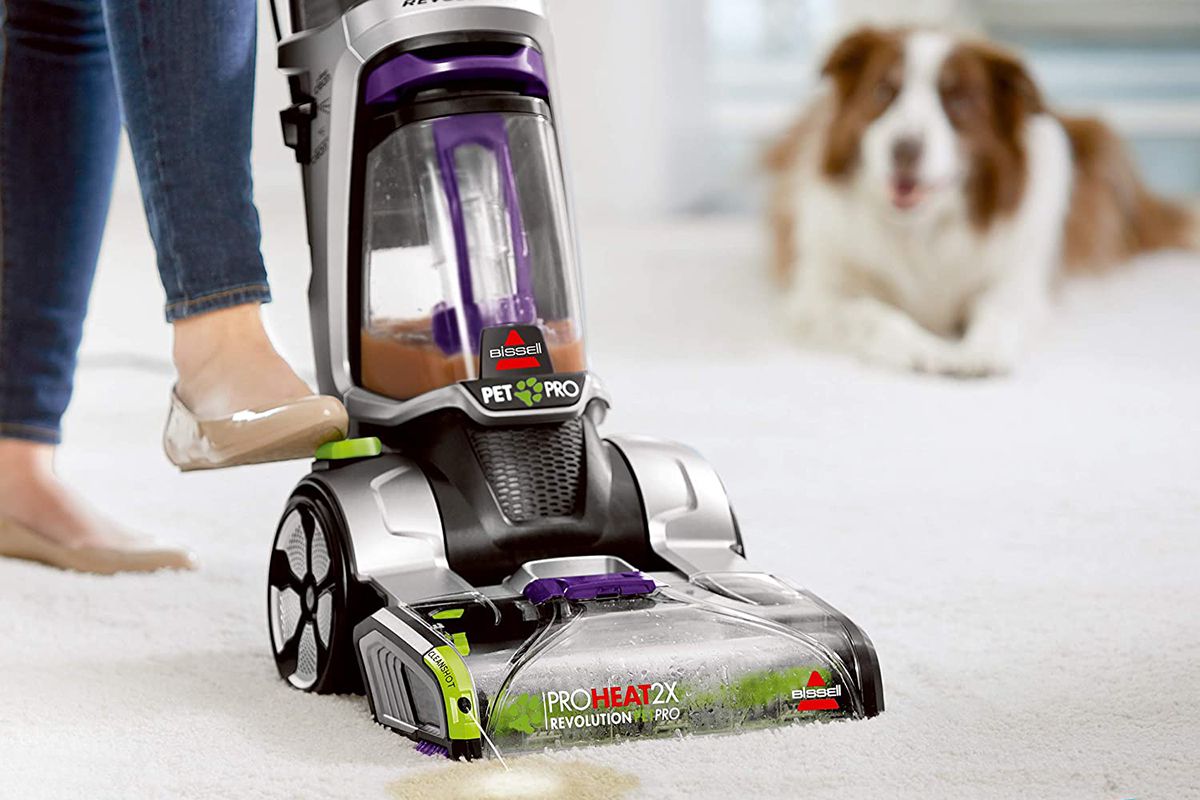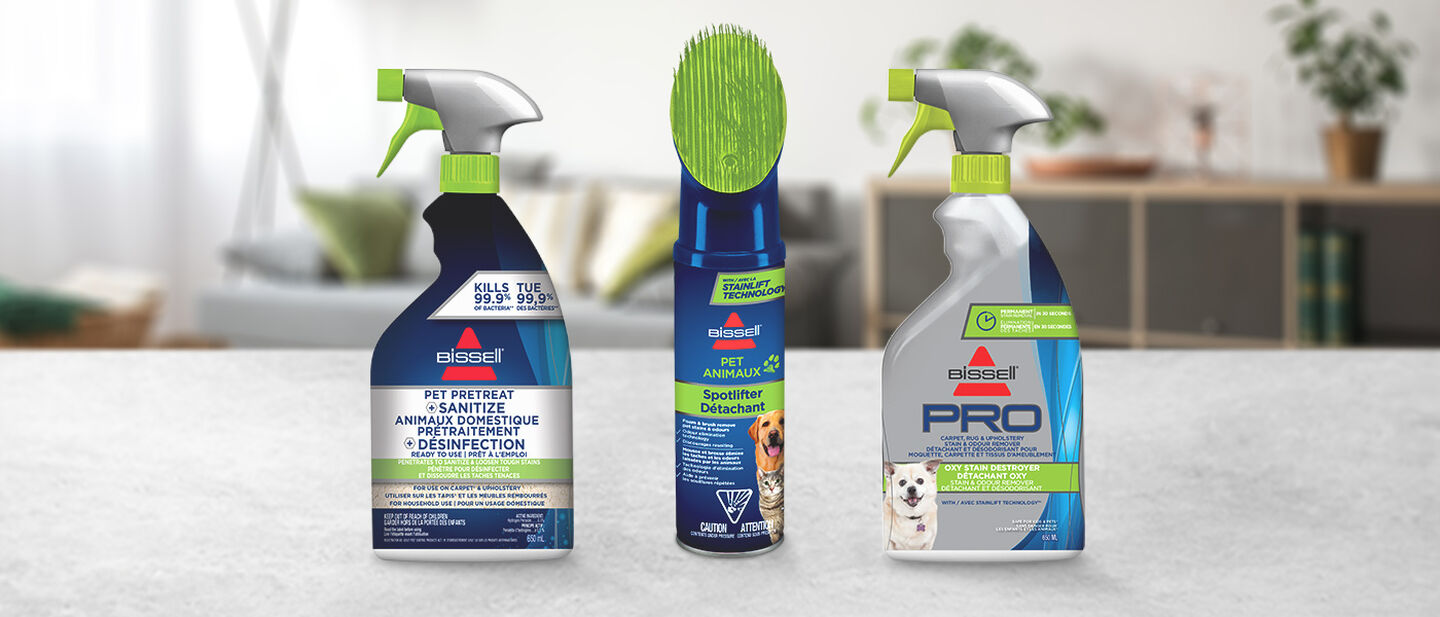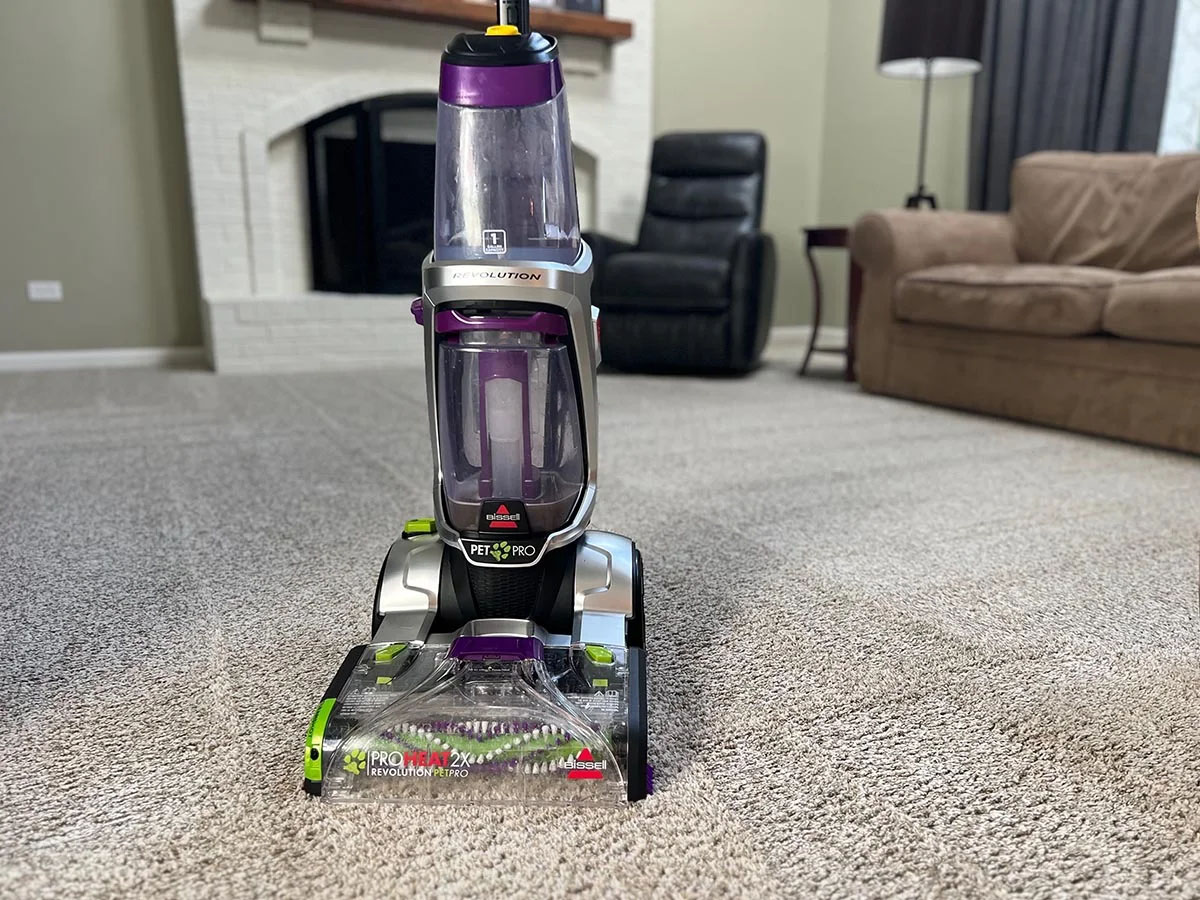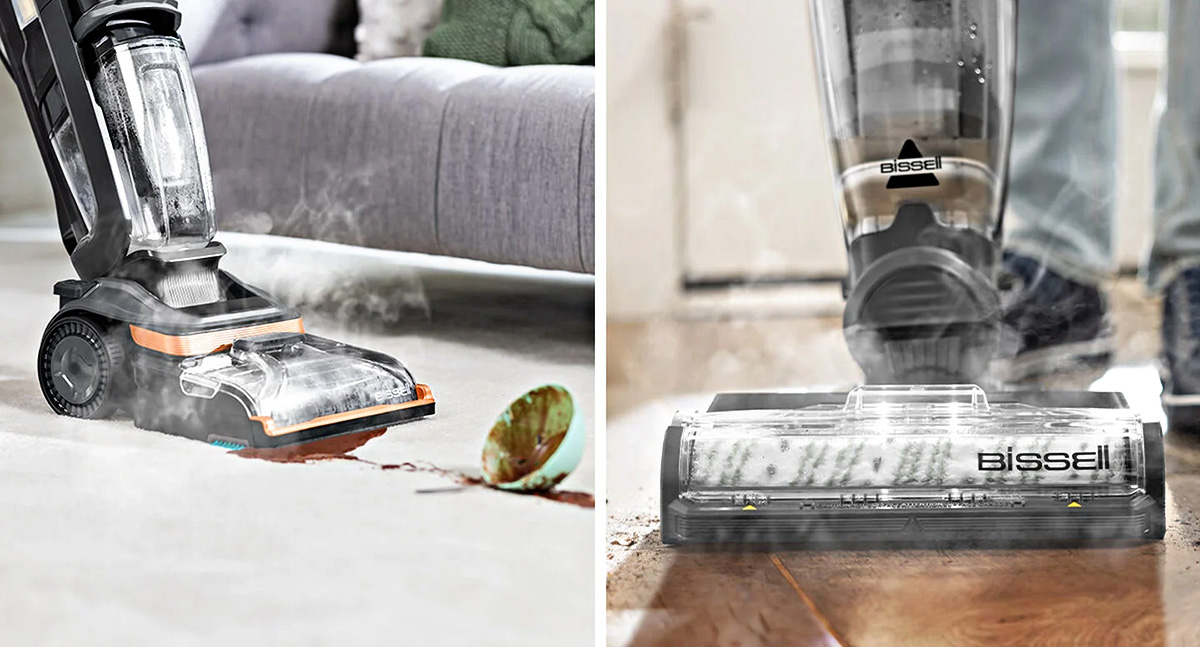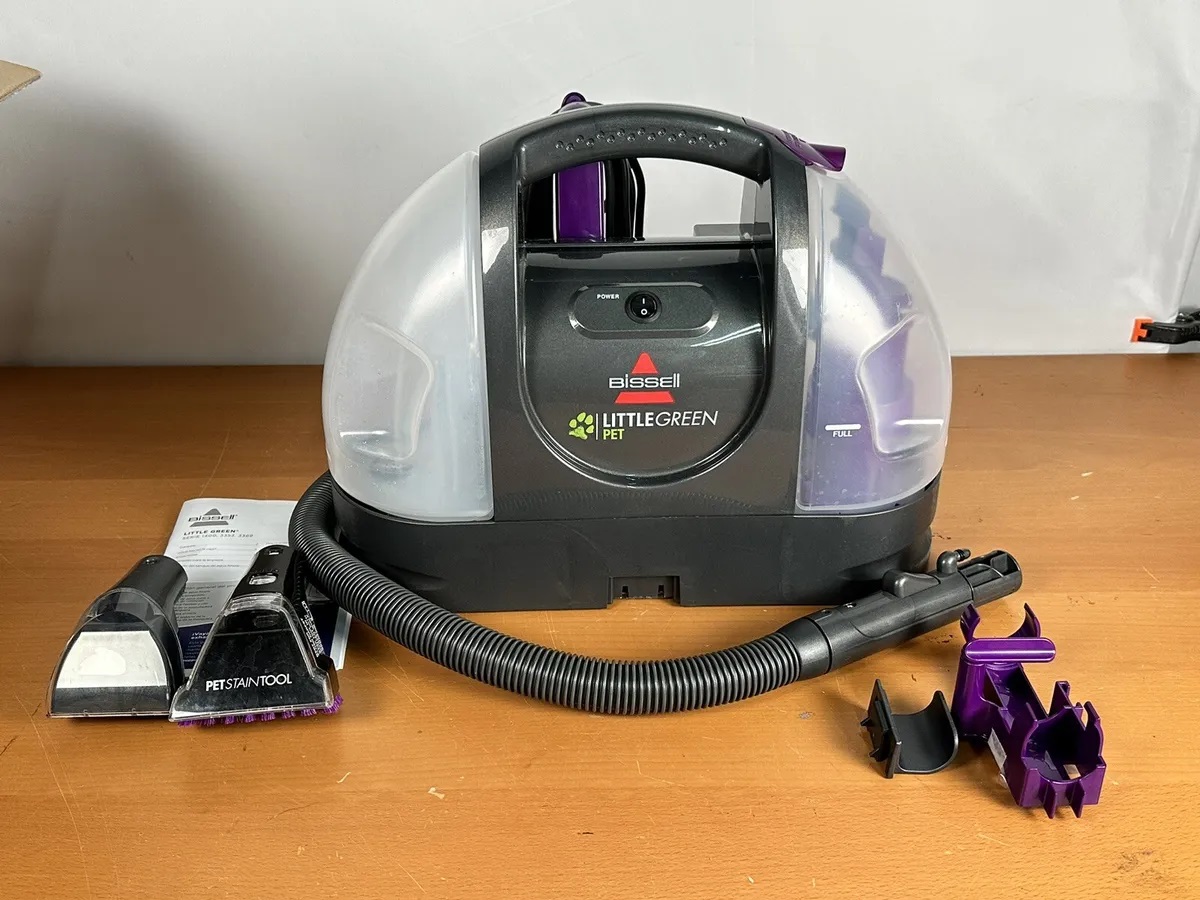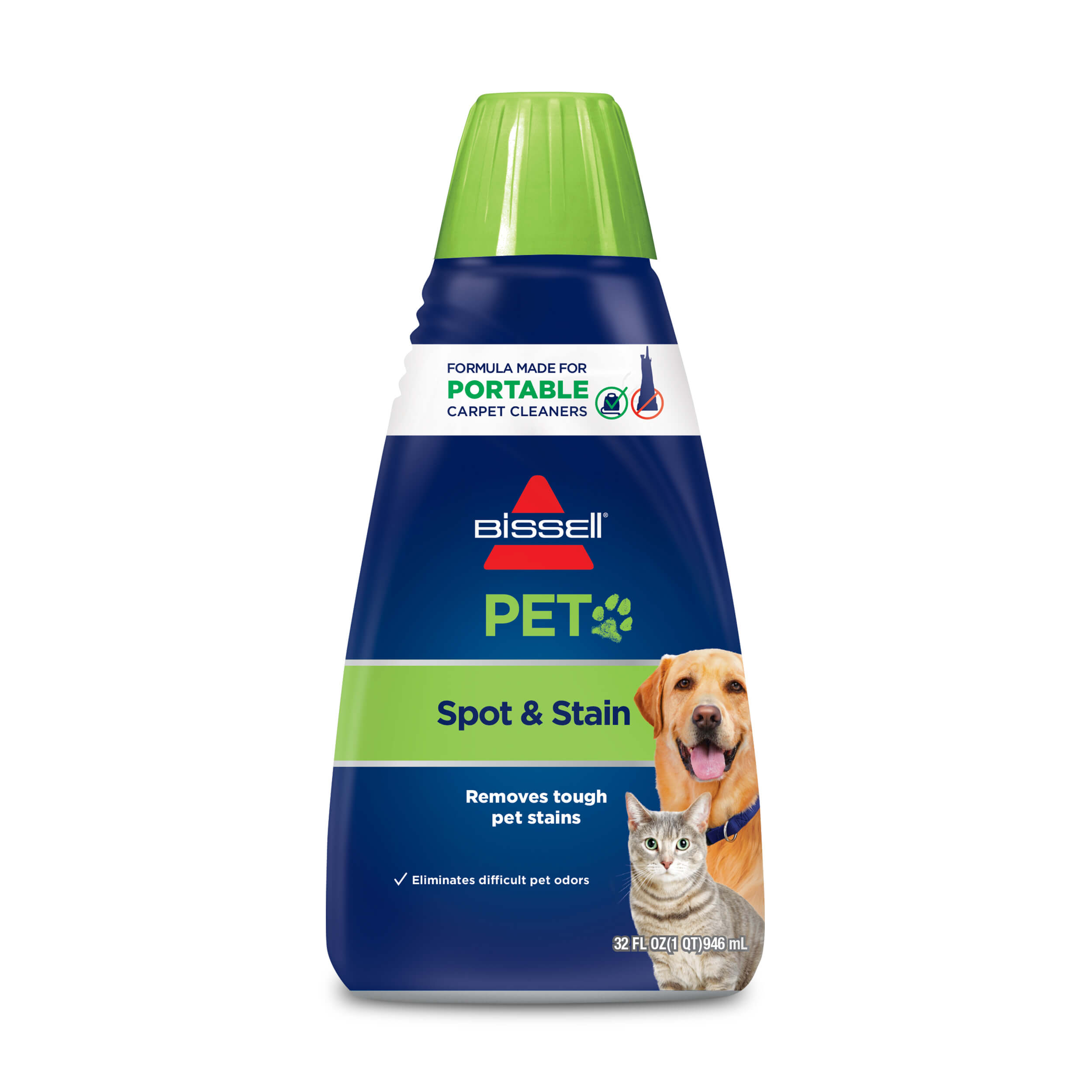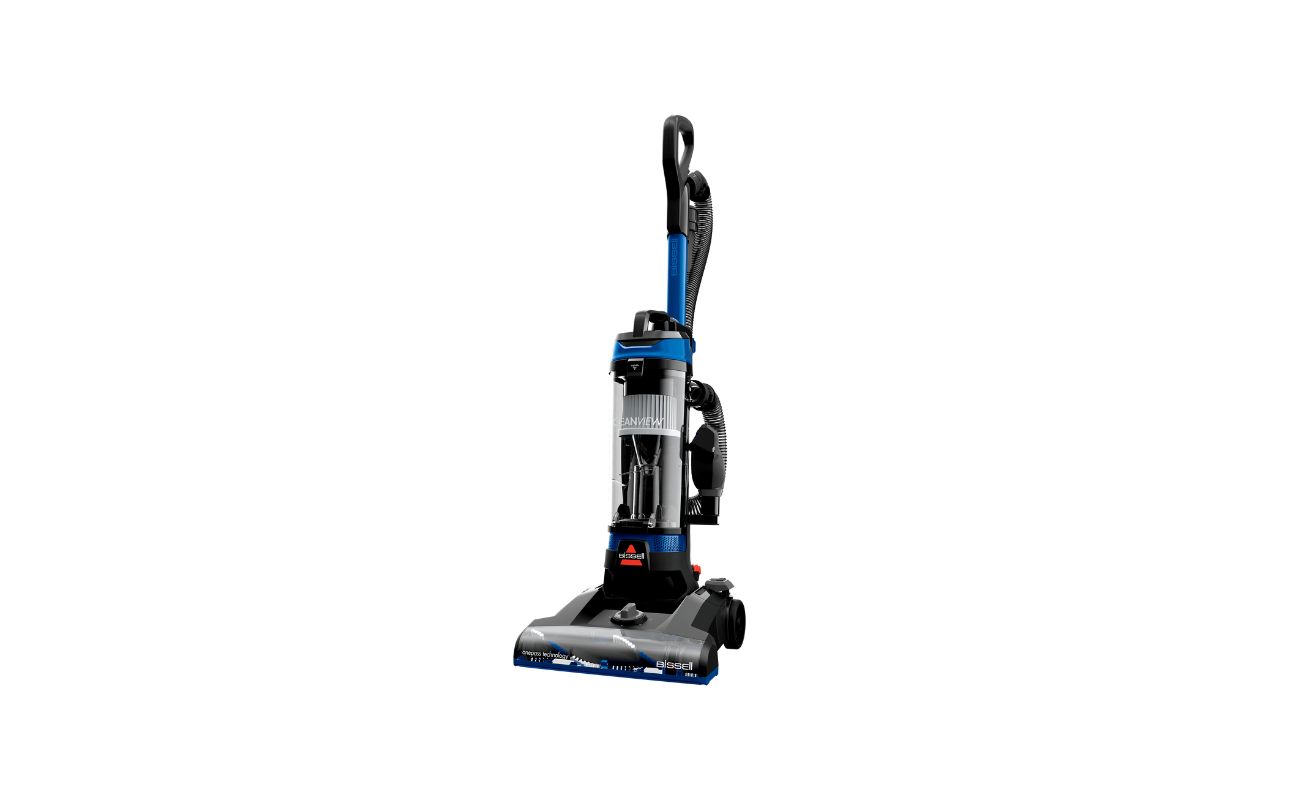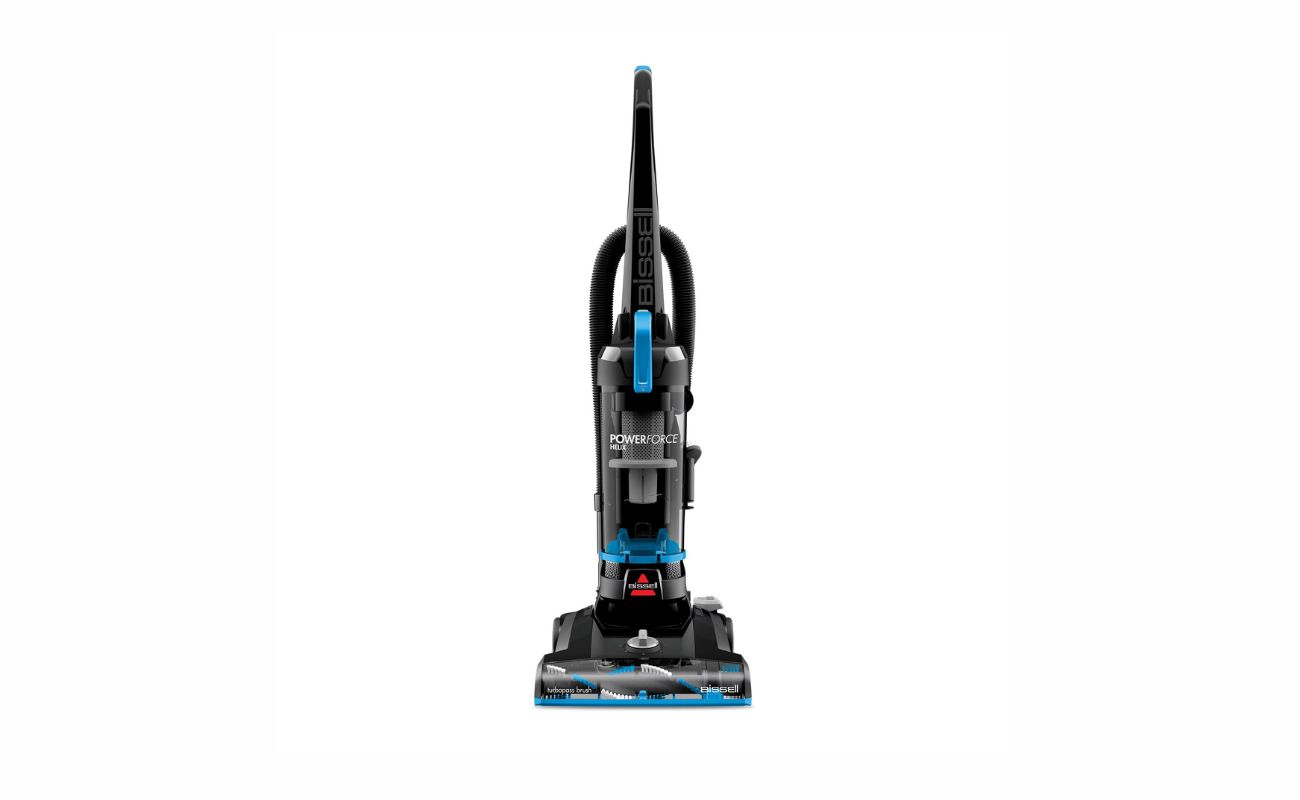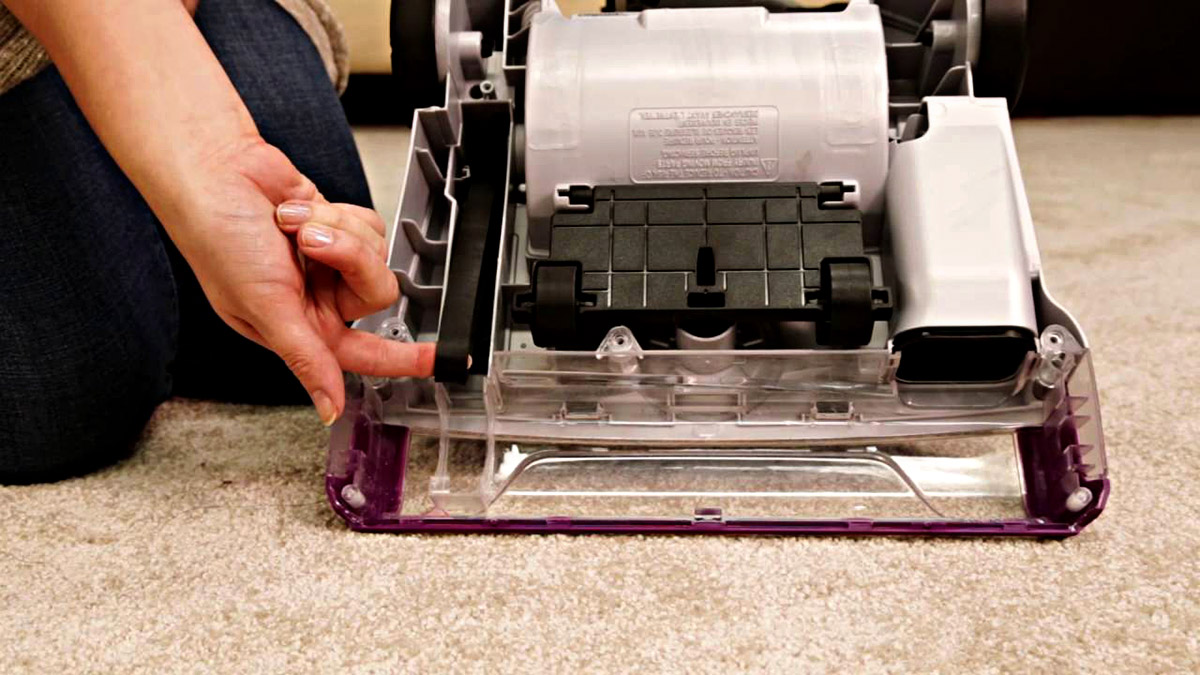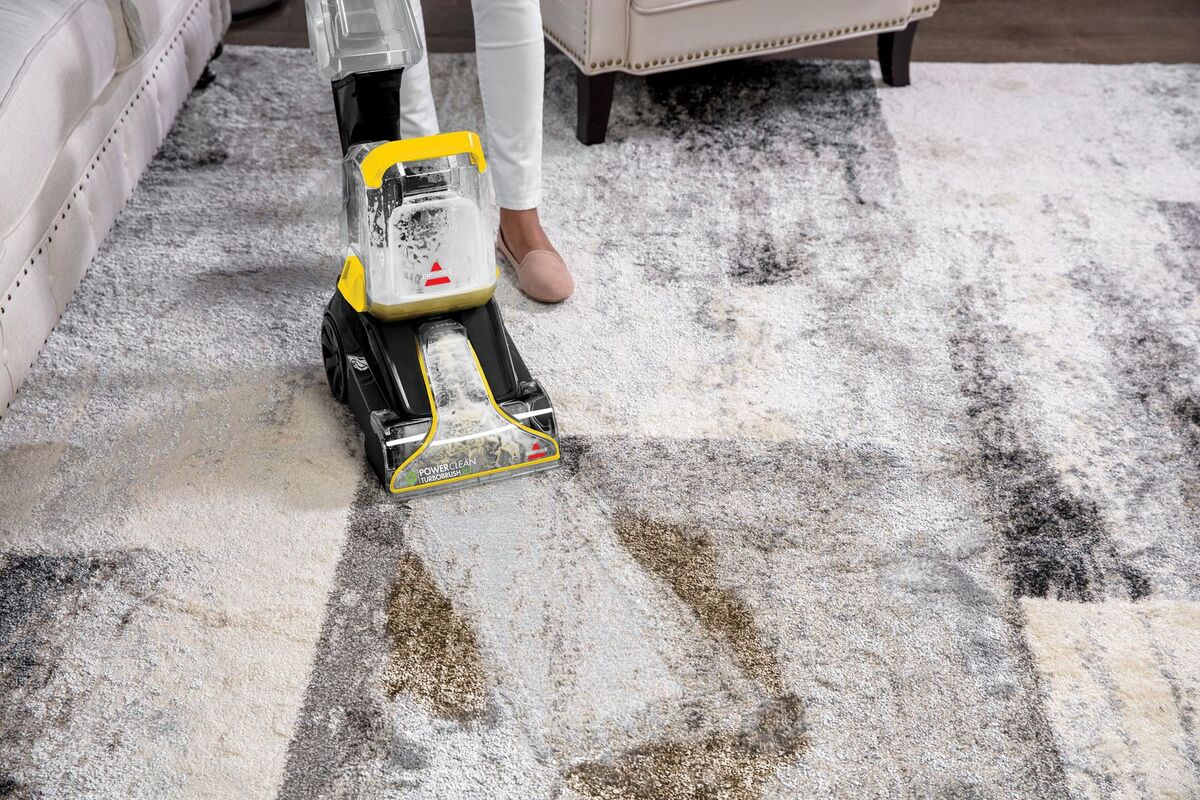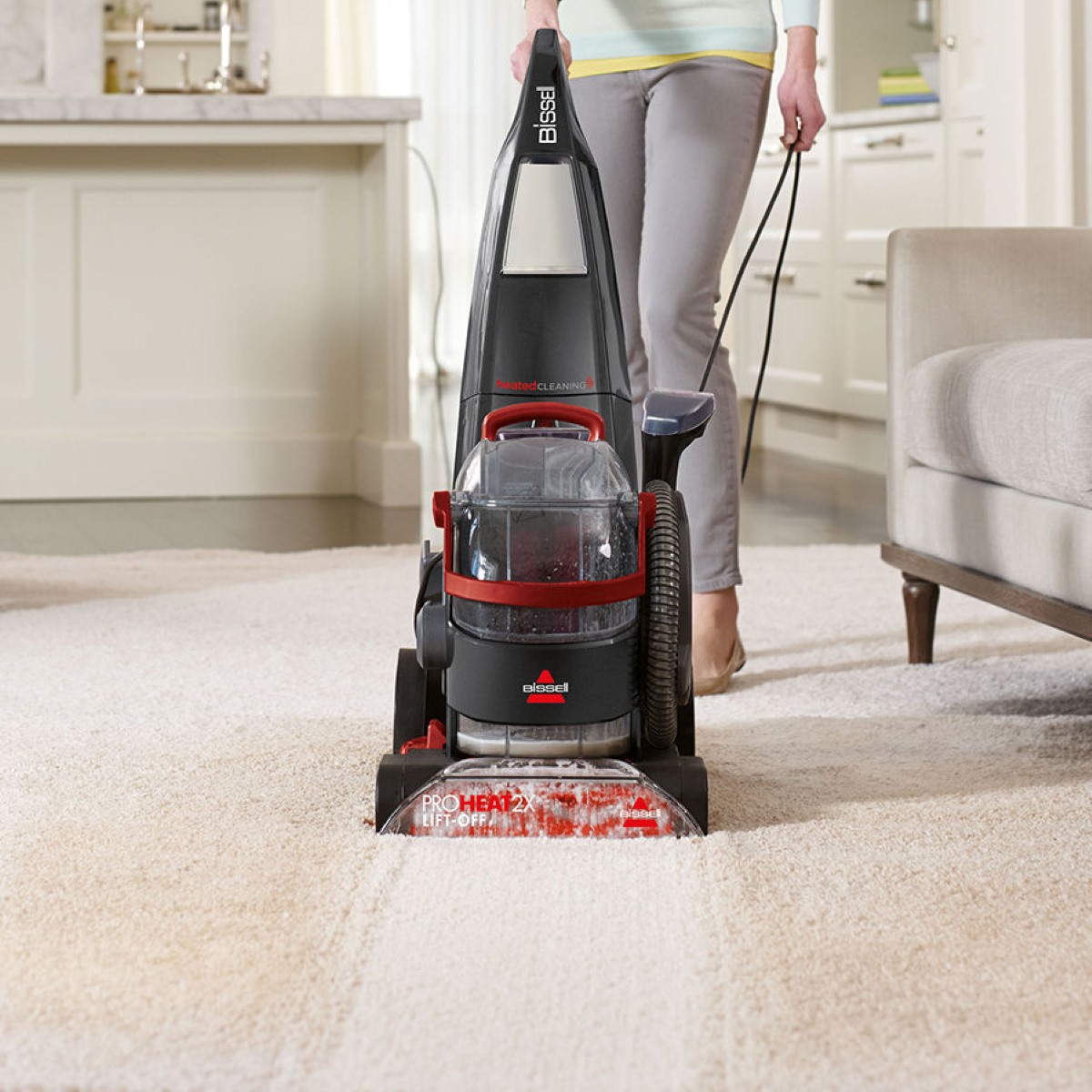

Articles
How To Unclog Bissell Carpet Cleaner
Modified: August 28, 2024
Learn effective techniques and tips in our articles on how to unclog your Bissell carpet cleaner and keep it running smoothly.
(Many of the links in this article redirect to a specific reviewed product. Your purchase of these products through affiliate links helps to generate commission for Storables.com, at no extra cost. Learn more)
Introduction
Welcome to the definitive guide on how to unclog your Bissell carpet cleaner. Having a clogged carpet cleaner can be frustrating, especially when you’re in the middle of a cleaning job. However, there’s no need to panic! In this article, we will walk you through the step-by-step process of unclogging your Bissell carpet cleaner, ensuring that it’s back to its optimal performance in no time.
Carpet cleaners are essential tools for maintaining the cleanliness and appearance of your carpets. They work by spraying a mix of water and cleaning solution onto the carpet and then extracting the dirty water, leaving your carpets fresh and odor-free. However, over time, debris and residue can accumulate in the cleaner’s components, leading to clogs in the spray nozzles, hoses, or other parts of the machine. A clogged carpet cleaner will not be able to deliver the desired cleaning results, and it may even cause damage to the machine if not addressed promptly.
Fortunately, unclogging a Bissell carpet cleaner is a relatively simple task that can be done with a few basic tools and materials, along with a little bit of patience. In the following sections, we will cover the step-by-step process to help you unclog your carpet cleaner and get it running smoothly again.
Before we get started, it’s important to note that different models of Bissell carpet cleaners may have slight variations in their design and components. Therefore, it’s always a good idea to consult your machine’s user manual for specific instructions and guidelines. With that said, let’s dive into the process of unclogging your Bissell carpet cleaner and restoring its performance.
Key Takeaways:
- Regular maintenance and proper cleaning practices are crucial for preventing clogs in your Bissell carpet cleaner. Follow the manufacturer’s guidelines, use recommended cleaning solutions, and store the machine in a clean, dry area to keep it in optimal condition.
- When unclogging your Bissell carpet cleaner, always prioritize safety by unplugging the machine before performing any maintenance. Use gentle techniques and tools to remove clogs, and if issues persist, seek professional assistance or contact the manufacturer’s support team.
Read more: How To Empty A Bissell Carpet Cleaner
Understanding the Problem
Before we start unclogging your Bissell carpet cleaner, it’s important to understand the common causes of clogs and how they can affect the machine’s performance. By gaining insight into the problem, you’ll be better equipped to prevent future clogs and ensure the efficiency of your carpet cleaner.
One of the main causes of clogs in carpet cleaners is debris and dirt buildup. This can occur when the cleaner is not properly cleaned and maintained after each use. Over time, particles such as hair, lint, and carpet fibers can accumulate in the machine’s components, leading to blockages in the spray nozzles, hoses, or filters.
In addition to debris buildup, another common cause of clogs is the use of improper cleaning solutions or excessive foaming. If you use a cleaning solution that is not recommended for your carpet cleaner or if you mix the solution with too much water, it can result in excessive foaming. This foam can create blockages in the machine’s internal mechanisms, preventing proper suction and spray.
It’s also worth noting that running the carpet cleaner over large objects or debris, such as coins or small toys, can cause immediate clogs. It’s important to remove any large debris from the carpeted area before starting the cleaning process.
When the carpet cleaner is clogged, you may notice several signs indicating the problem. The spray may become weak or uneven, with reduced water flow or uneven coverage. The machine may also make unusual noises or emit a burning smell, indicating that there is a blockage in the motor or other critical components.
By understanding the causes and signs of a clogged carpet cleaner, you’ll be able to take the necessary steps to resolve the issue. In the next section, we’ll discuss the tools and materials you’ll need to successfully unclog your Bissell carpet cleaner.
Tools and Materials Needed
Before you begin unclogging your Bissell carpet cleaner, make sure you have the following tools and materials on hand:
- Screwdriver: You may need a screwdriver to remove screws or access certain parts of the machine.
- Old Toothbrush: This will come in handy for scrubbing and cleaning small parts of the carpet cleaner.
- Clean, Warm Water: Fill a bucket or sink with warm water to use for cleaning the machine.
- White Vinegar: White vinegar is an effective natural cleaner that can help dissolve stubborn clogs and remove buildup.
- Cleaning Solution: If you have a specific carpet cleaner solution recommended by the manufacturer, it’s best to use that. Otherwise, you can use a mild dish soap diluted in water.
- Clean, Dry Towels: You’ll need towels to wipe down the machine and absorb any excess water during the cleaning process.
These basic tools and materials will be sufficient for most unclogging scenarios. However, depending on the specific model and design of your Bissell carpet cleaner, you may require additional tools or accessories. As mentioned earlier, consult your machine’s user manual for any specific recommendations or requirements.
Now that we have all the necessary tools and materials, we can move on to the step-by-step process of unclogging your Bissell carpet cleaner. In the next section, we’ll guide you through the first step: preparing the cleaner for unclogging.
Step 1: Preparing the Cleaner
Before you dive into unclogging your Bissell carpet cleaner, it’s crucial to properly prepare the machine. This step will ensure your safety and prevent any further damage to the cleaner.
Start by unplugging the carpet cleaner from the power source to avoid any potential accidents. If your carpet cleaner has a removable water tank, detach it from the machine and empty any remaining cleaning solution or water. Thoroughly rinse the tank with clean, warm water to remove any residue or debris.
Next, inspect the hose, spray nozzles, and other components for visible clogs or blockages. Use your fingers or a soft cloth to remove any easily accessible debris that you can reach. However, avoid using sharp objects or poking the components aggressively, as this can cause damage.
If your Bissell carpet cleaner has a filter, check if it is dirty or clogged. The filter is responsible for preventing debris from reaching the motor and other sensitive parts of the cleaner. If the filter is dirty, remove it according to the manufacturer’s instructions and clean it thoroughly. If the filter is damaged, make sure to replace it before continuing with the unclogging process.
Once you have inspected and cleaned the visible parts of the machine, it’s time to gather the cleaning solution. If you have a specific carpet cleaner solution recommended by the manufacturer, follow the instructions on the bottle to prepare the solution. If not, you can create a mild cleaning solution by diluting a small amount of dish soap in warm water.
Now that your Bissell carpet cleaner is prepared and ready for unclogging, let’s move on to the next step: identifying the clog. This step is crucial in understanding the location and nature of the obstruction so that you can effectively remove it. Read on to learn more in the next section.
Step 2: Identifying the Clog
Identifying the specific location and nature of the clog in your Bissell carpet cleaner is essential for successful unclogging. By determining where the blockage is, you can focus your efforts and ensure a thorough removal of the obstruction.
Start by visually inspecting the spray nozzles and hoses for any visible signs of clogs. Look for debris, hardened residue, or any abnormal buildup that could be causing the problem. Pay close attention to the nozzle tips, as they are more prone to clogs due to their small openings.
If you notice a blockage in the spray nozzles, you can try using a toothpick or small pin to carefully remove the debris. Gently insert the toothpick or pin into the nozzle’s opening and wiggle it back and forth to dislodge the clog. Be careful not to apply too much force or damage the nozzle.
Next, check the hoses for any kinks, twists, or clogs. Straighten out any kinks or twists to ensure smooth water flow. If you suspect a clog in the hoses, detach them from the machine, and inspect them closely. You can use a flashlight to look inside and identify any blockages. If there is a clog, you can gently push it out with a long, flexible object like a pipe cleaner or an unused electrical wire.
It’s also worth checking the machine’s filters, as clogs can occur in these components as well. Remove the filters according to the manufacturer’s instructions and examine them for any debris or buildup. If necessary, clean the filters or replace them with new ones.
If you’ve gone through these steps and still can’t identify the exact location of the clog, it may be deeper within the machine’s internal components. In this case, it’s best to proceed with the next step, which involves removing the clog from the cleaner. We’ll walk you through this process in detail in the following section.
To unclog a Bissell carpet cleaner, start by removing the dirty water tank and checking for any debris or clogs in the nozzle and brush. Use a pipe cleaner or small brush to clear any blockages, then reassemble and test the machine.
Step 3: Removing the Clog
Now that you have identified the location of the clog in your Bissell carpet cleaner, it’s time to remove the obstruction and restore the machine’s functionality. This step will involve disassembling certain parts of the cleaner and using specific techniques to dislodge and remove the clog.
Start by referring to your machine’s user manual to understand how to access the internal components that are affected by the clog. In most cases, you will need to remove screws or clips to open up the cleaner’s housing and gain access to the affected area.
Once you have accessed the clogged area, use a combination of gentle shaking and tapping to loosen the debris. You can also use a soft brush or toothbrush to scrub away any stubborn residue or buildup. Avoid using excessive force that could damage the components.
If the clog is located in the spray nozzles, you can try soaking them in warm water or a vinegar solution to dissolve the blockage. Submerge the nozzles in the solution for a few minutes and then use a soft brush to gently scrub away any remaining debris. Rinse the nozzles thoroughly before reattaching them to the machine.
If the clog is within the hoses or other parts of the machine, you may need to manually dislodge it using a combination of tools and techniques. A flexible object like a pipe cleaner or an unused electrical wire can be inserted into the affected area to push or pull out the clog. Be patient and gentle throughout this process to avoid damaging any components.
Once you have successfully removed the clog, carefully reassemble the parts of the machine that you had to disassemble earlier. Ensure that all components are properly aligned and securely fastened before moving on to the next step.
With the clog removed and the machine reassembled, it’s time to clean the carpet cleaner itself and ensure that all residual debris and cleaning solution are completely removed. We’ll cover this step in detail in the next section.
Step 4: Cleaning the Cleaner
Now that you’ve successfully removed the clog from your Bissell carpet cleaner, it’s important to clean the machine itself to prevent any future clogs and maintain its performance. Regular cleaning and maintenance will ensure that your carpet cleaner continues to operate smoothly and efficiently.
Start by filling a bucket or sink with clean, warm water. Add a small amount of mild dish soap or a recommended carpet cleaner solution and mix it well. This solution will be used to clean the various parts of the machine.
Begin by wiping down the exterior surfaces of the cleaner with a damp cloth or sponge. Pay attention to any areas where debris or cleaning solution may have accumulated, such as the control panel or the handle.
Next, remove any detachable parts, such as the water tank, brushes, or filters. Rinse these parts thoroughly under running water to remove any residual debris or cleaning solution. Use a soft brush or toothbrush to scrub away any stubborn buildup. If necessary, soak the parts in warm, soapy water to further loosen any dirt or residue.
For the internal components of the machine, such as the hoses and spray nozzles, fill a bowl or basin with the warm water and cleaning solution mixture. Submerge these parts in the solution and let them soak for a few minutes. Use a soft brush or toothbrush to gently scrub away any remaining debris or buildup.
Once all the parts have been thoroughly cleaned, rinse them under running water to remove any soap or cleaning solution. Shake off any excess water and dry the parts with a clean towel. Make sure that all parts are completely dry before reassembling the machine.
After cleaning the machine and its components, it’s a good idea to run clean, warm water through the machine to flush out any remaining residue or debris. Fill the water tank with warm water and attach it securely to the cleaner. Turn on the machine and run it for a few minutes, allowing the water to flush through the internal parts and be expelled through the spray nozzles.
Finally, empty and rinse the water tank and dry it thoroughly before storing it with the machine. This will prevent any moisture or mold growth inside the tank.
By following these cleaning steps after unclogging your Bissell carpet cleaner, you’ll ensure that it is in optimal condition for future use and minimize the risk of future clogs.
After cleaning the machine, it’s important to test it to ensure that it’s functioning properly. We’ll cover this final step in the next section.
Step 5: Testing the Cleaner
After unclogging and cleaning your Bissell carpet cleaner, it’s essential to test the machine to ensure that it’s working properly and free of any remaining issues. Testing the cleaner will give you the confidence that it’s back to its optimal performance and ready for future cleaning tasks.
Start by filling the water tank with clean, warm water. Avoid adding any cleaning solution at this stage as you want to focus solely on testing the suction and spray functionality of the machine.
Attach the water tank securely to the cleaner and plug it into a power source. Make sure that all the parts are correctly assembled and all switches and controls are in the proper positions.
Turn on the carpet cleaner and run it over a small, inconspicuous area of your carpet. Observe the spray pattern to ensure that it is consistent and evenly distributed. Listen for any unusual noises that could indicate a problem with the motor or other components.
As you move the cleaner, check the suction power to ensure that it’s effectively extracting the water from the carpet. If the suction seems weak or insufficient, double-check that all connections and hoses are securely attached and that there are no obstructions in the airflow.
If the machine is performing as expected during the test, you can proceed to use it for your regular carpet cleaning tasks. However, if you notice any issues or abnormalities during the testing phase, refer back to the previous steps to see if there are any further clogs or maintenance tasks that need to be addressed.
If the problem persists or if you’re unsure about any aspect of the machine’s performance, it’s always a good idea to consult the manufacturer’s support or seek professional assistance. They can provide further guidance on troubleshooting or repairs to ensure that your Bissell carpet cleaner is functioning optimally.
Congratulations! By successfully unclogging, cleaning, and testing your Bissell carpet cleaner, you have restored its functionality and ensured its continued performance. Proper maintenance, regular cleaning, and prompt unclogging will help prolong the life of your machine and ensure that it remains a reliable tool for keeping your carpets clean and fresh.
Now that you have completed all the necessary steps, it’s time to enjoy the benefits of a fully functional Bissell carpet cleaner. Happy cleaning!
Tips and Warnings
Here are some additional tips and warnings to keep in mind when unclogging your Bissell carpet cleaner:
Tips:
- Regularly clean and maintain your carpet cleaner to prevent clogs from occurring in the first place.
- Follow the manufacturer’s guidelines for recommended cleaning solutions and usage instructions.
- Consider using a carpet cleaner solution specifically designed for your machine to optimize performance and prevent buildup.
- Clean the machine after each use to prevent debris from accumulating and causing clogs.
- Store your carpet cleaner in a clean and dry area to avoid dust or dirt from entering the machine.
Warnings:
- Always unplug the carpet cleaner before performing any maintenance or unclogging tasks to avoid the risk of electrical shock.
- Be cautious when using tools to remove clogs, ensuring that you do not damage any delicate parts of the machine.
- Avoid using sharp objects or excessive force when disassembling or reassembling the cleaner, as this can cause damage.
- Do not use harsh chemicals or abrasive materials that may harm the machine or compromise its performance.
- If you encounter persistent clogs or issues with your Bissell carpet cleaner, contact the manufacturer’s support or seek professional assistance.
By following these tips and adhering to the warnings, you’ll maintain a safe and effective unclogging process while ensuring the longevity and performance of your Bissell carpet cleaner.
With the information and steps outlined in this guide, you’re now equipped to tackle any clogs that may arise in your Bissell carpet cleaner. Remember, regular maintenance and proper cleaning practices are key to preventing clogs and keeping your machine in top-notch condition. Happy cleaning!
Conclusion
Congratulations! You’ve reached the end of this comprehensive guide on how to unclog your Bissell carpet cleaner. By following the step-by-step process outlined in this article, you’ve learned how to identify and remove clogs, clean and maintain the machine, and test its functionality. With these skills and knowledge, you’ll be able to keep your carpet cleaner running smoothly and efficiently, ensuring clean and fresh carpets.
Remember, regular maintenance and proper cleaning practices are the key to preventing future clogs in your Bissell carpet cleaner. Take the time to clean the machine after each use, remove any debris or buildup, and follow the manufacturer’s guidelines for suggested cleaning solutions and maintenance tasks. By doing so, you’ll extend the life of your machine and enjoy optimal performance.
In addition to preventing clogs, it’s important to address issues promptly if they do occur. By following the steps in this guide, you have the tools and knowledge to tackle clogs in your Bissell carpet cleaner and restore its functionality. However, if you encounter persistent or complicated clogs, it’s always a good idea to seek professional assistance or reach out to the manufacturer’s support team for guidance.
Thank you for taking the time to learn how to unclog your Bissell carpet cleaner. We hope that this guide has been informative and helpful in your carpet cleaning journey. With the proper maintenance and care, your carpet cleaner will continue to be a reliable and effective tool for keeping your carpets fresh and clean for years to come.
Happy cleaning!
Frequently Asked Questions about How To Unclog Bissell Carpet Cleaner
Was this page helpful?
At Storables.com, we guarantee accurate and reliable information. Our content, validated by Expert Board Contributors, is crafted following stringent Editorial Policies. We're committed to providing you with well-researched, expert-backed insights for all your informational needs.
